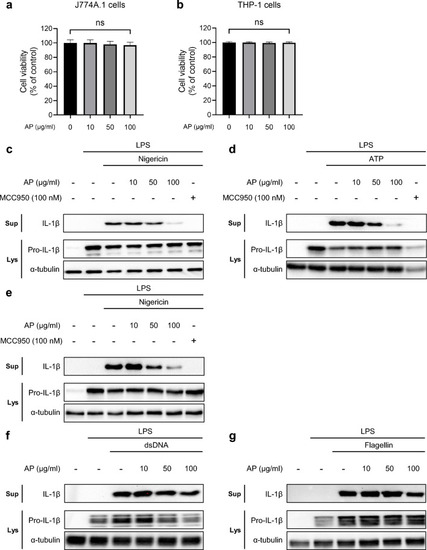- Title
-
Aiouea padiformis extract exhibits anti-inflammatory effects by inhibiting the ATPase activity of NLRP3
- Authors
- Lee, S., Ye, Q., Yang, H., Lee, S., Kim, Y., Lee, N., Gonzalez-Cox, D., Yi, D.K., Kim, S.Y., Choi, S., Choi, T., Kim, M.S., Hong, S.S., Choi, C.W., Lee, Y., Park, Y.H.
- Source
- Full text @ Sci. Rep.
|
AP specifically reduces NLRP3 inflammasome activation. ( |
|
AP does not affect the NF-κB signaling pathway. ( |
|
AP inhibits NLRP3 inflammasome, regardless of K+ efflux, intracellular ROS, and mitochondrial membrane potential. ( |
|
AP blocks NLRP3 inflammasome assembly by hindering ATPase activity of NLRP3. ( |
|
AP alleviates inflammatory response induced by LPS treatment in zebrafish. ( |





